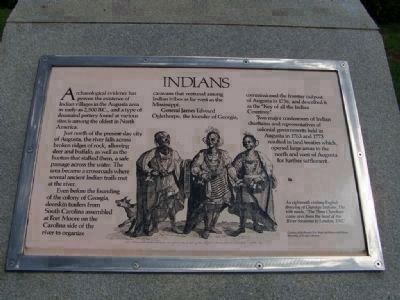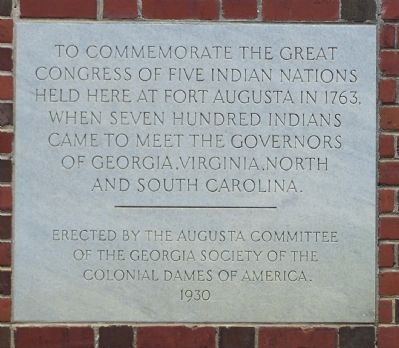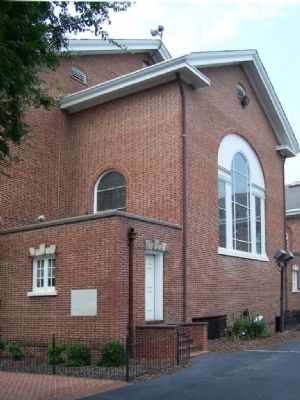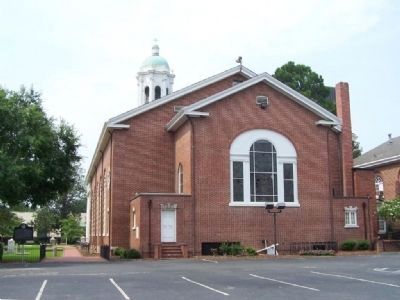Augusta in Richmond County, Georgia — The American South (South Atlantic)
Five Indian Nations
Erected 1930 by Augusta Committee of the Georgia Society of the Colonial Dames of America.
Topics and series. This historical marker is listed in these topic lists: Native Americans • Notable Events. In addition, it is included in the The Colonial Dames of America, National Society of series list. A significant historical year for this entry is 1763.
Location. 33° 28.585′ N, 81° 57.659′ W. Marker is in Augusta, Georgia, in Richmond County. Marker is on Washington Street near Reynolds Street. St. Paul's Episcopal Church rear parking lot. Touch for map. Marker is at or near this postal address: 605 Reynolds St, Augusta GA 30901, United States of America. Touch for directions.
Other nearby markers. At least 8 other markers are within walking distance of this marker. The Colonial Church of Augusta (a few steps from this marker); Fort Augusta (a few steps from this marker); Railroads (a few steps from this marker); Washington's Southern Tour (within shouting distance of this marker); U.S. Marshal Robert Forsyth (within shouting distance of this marker); Fort Augusta ~ Fort Cornwallis / St. Paul's Episcopal Church (about 300 feet away, measured in a direct line); Colonel William Few, Jr. (about 400 feet away); Major Ferdinand Phinizy (about 400 feet away). Touch for a list and map of all markers in Augusta.

Photographed By Mike Stroud, 2008
4. Five Indian Nations Marker additional marker along River Walk Park ~
An eighteenth century English drawing of Cherokee Indians. The title reads, " The Three Cherokees came over from the head of the River Savanna to London, 1762."
Courtsey of the Hargrett Rare Book and Manuscript Library, University of Georgia Libraries
Credits. This page was last revised on June 16, 2016. It was originally submitted on August 3, 2008, by Mike Stroud of Bluffton, South Carolina. This page has been viewed 1,910 times since then and 26 times this year. Photos: 1, 2, 3. submitted on August 3, 2008, by Mike Stroud of Bluffton, South Carolina. 4. submitted on August 5, 2008, by Mike Stroud of Bluffton, South Carolina. • Kevin W. was the editor who published this page.


